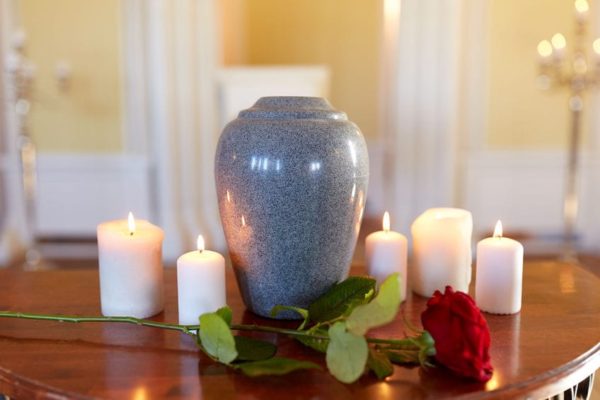Cremation in no way prevents family and friends from participating in the traditions, ceremonies, or rituals of a funeral service.
Simplicity, environmental concerns, and flexibility in ceremony planning add to its increasing selection. Some choose cremation for economic reasons.
As with the option of burial, cremation can occur after a traditional funeral celebrating the life of the deceased where the casket is present at one’s place of worship or a funeral home chapel. Often times the only difference between a funeral celebration followed by a burial and one followed by cremation, is that the body is taken to the crematory after the services instead of the cemetery.
The memorial service, like a funeral, is a service of remembrance, only without the body present. A family may choose to have the cremation process take place and then hold a service in a church or at the funeral home with the cremated remains displayed in the selected urn. The urn is usually placed on a table with a portrait of the deceased and a vase of flowers or other floral tributes.
As the name implies, direct cremation takes place shortly following death without any scheduled viewing or services. Direct cremation is the most economic (affordable) option for disposition. It gives the family flexibility to arrange for a memorial service – or multiple memorial services – at a date, time and location of the family’s choosing which avoids the costs of a casket and funeral services.
How to honor a life
The act of honoring someone you love is deeply personal and can’t be summed up by a list of to-dos. However, if you strive to help others with the memory of a loved one or share their life and passions with others, each day can bring hope to you and those you touch.
- Tell their stories. Recalling your favorite memories that showcase who they were and sharing them with others.
- Do something they loved. Go to their favorite spot, make their favorite meal, or spend time doing something they loved.
- Fundraise. Raise money for a cause they loved. Celebrate their life annually by giving to someone else. It’s also a time to share stories and photos with others.
Listed below are some of the options with regard to cremated remains:
- It is common to bury an urn in a grave space just as you would bury a casket. This allows families to remain together in a burial plot. The site then affords the surviving family a place for visitation and memorialization.
- Urns may be placed in a columbarium or mausoleum
- Some people prefer to keep the cremated remains in their personal possession and select an urn that reminds them of the deceased as a permanent keepsake.
- Scattering of cremated remains may be an option. Carefully consider this option as it is irreversible and there may be legal ramifications.
- Separation of family across the U.S.
- The process of arranging cremation is much simpler
- More eco-friendly
- New, innovative, and creative memorialization options can some times be more personal than the traditional funeral service or burial
- The cost of cremation is dramatically lower than a traditional burial
With the exception of the Orthodox Jewish, Eastern Orthodox, Islamic and a few Fundamentalist Christian faiths, most faiths and religions allow cremation.


